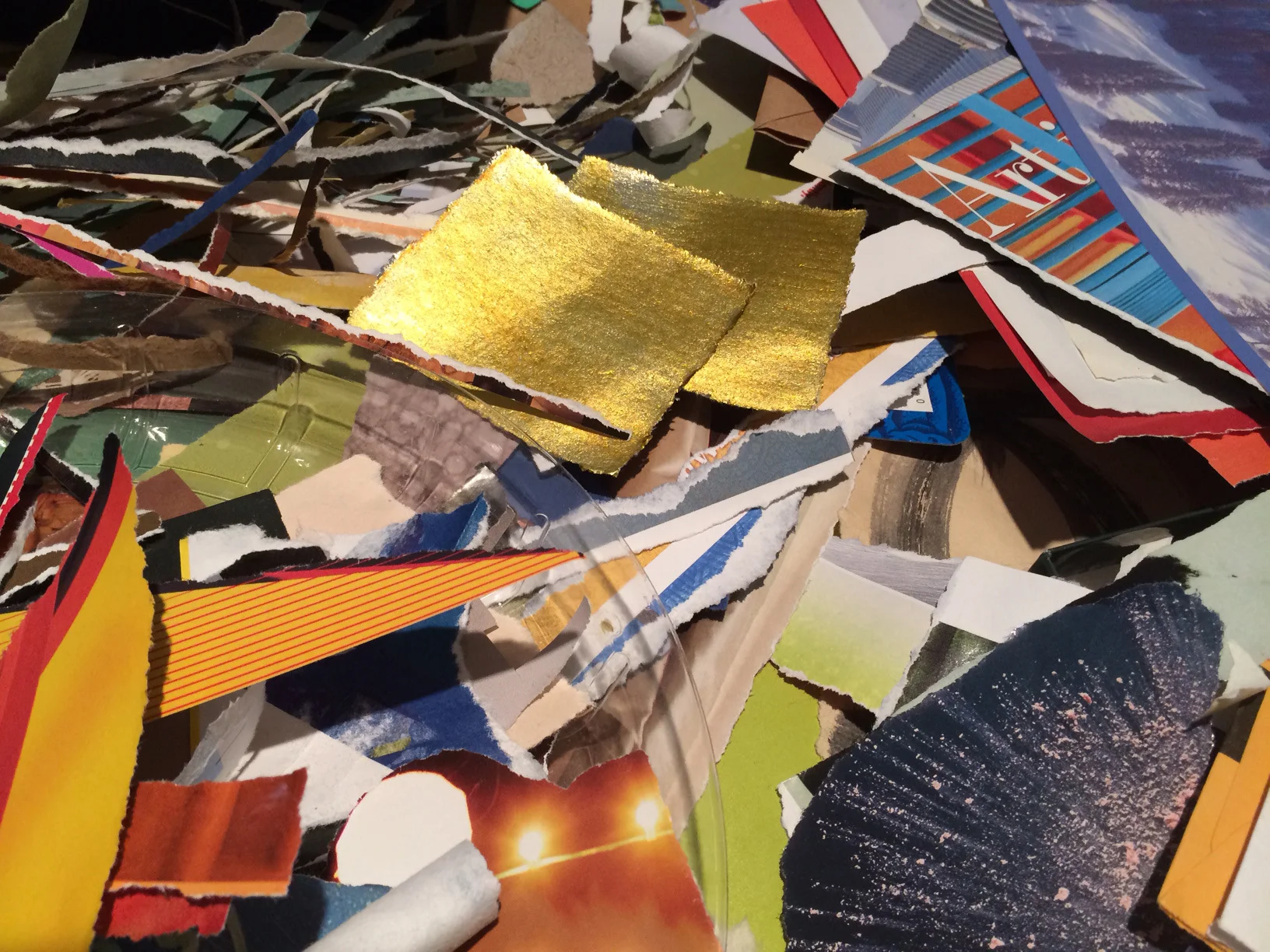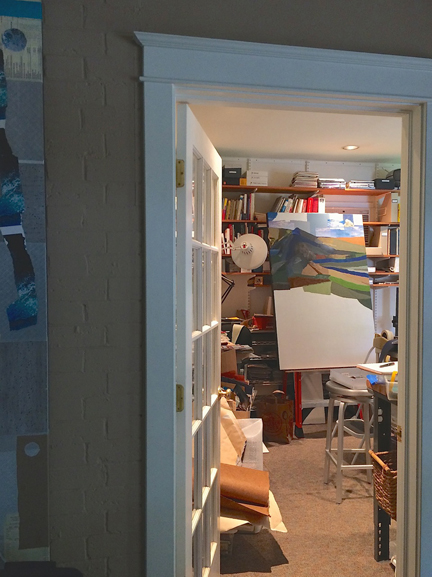I'm in the midst of reading artist Eric Fischl's autobiography, Bad Boy: My Life On and Off the Canvas — about the vagaries of the art market and his career trajectory. Whether you appreciate his work or not, the story is well-told and pretty fascinating. He writes about art and process in a way that is refreshingly approachable. I really liked his comments on collage, excerpted from the hardback edition, page 214-215...
"Early on in my life I wanted to embrace the margins, but as I grew up I came to realize that so much of my life has been a search for normal. I have consciously tried to make work that took fragments and pieced them back together—impressions and bits of memory collaged into foreign lands or suburban settings, all with the purpose of making them appear seamless. I was reliving my experiences as I was painting them, always at the point just before things fall apart.
Collage is the most important innovation in art since perspective was discovered in the fourteenth century. It's one of the defining techniques of modernism, especially for the surrealists. Perspective is a mathematical construct that creates the illusion of deep space. It enabled painters to move art away from the religious icon and into the realm of realism. Perspective imitated how we see. Collage, on the other hand, is an artificial construct that imitates how the mind works. It breaks down the world of images into fragments of memory torn from their original context. It's ahistorical, which is why avant-garde artists embraced it. My colleagues eagerly employed the collage technique and made it central to their art. They experimented with how far apart—at what distance both physically and intellectually—you could place two disparate images on a canvas and still create a formal composition that had dynamic tension, even if the juxtaposed images were essentially arbitrary.
I was uncomfortable with fragmentation and meaninglessness even though I appreciated it in other artists' work. I needed the world around me to make sense, though not in a stultifying or overdetermined way. Rather, I felt an obligation to give my audience the impression of a coherent moment that was emotionally charged and fragile, but still holding together long enough so viewers could reflect on what it meant. Except in the case of the multi panel paintings, I did not want to make my audience put something back together in order to understand what it means."
I never tire of working with fragmentation in my own artistic practice... Ripping remains my favorite artistic gesture. Salvaging, editing, and re-ordering fragments to create new imagery, relationships and meaning continues to engage my curiosity day in and day out. I believe I compose with fragments to create some level of coherence that reveals itself to the viewer over time, perhaps not immediately... interesting to think about artistic motivations.




